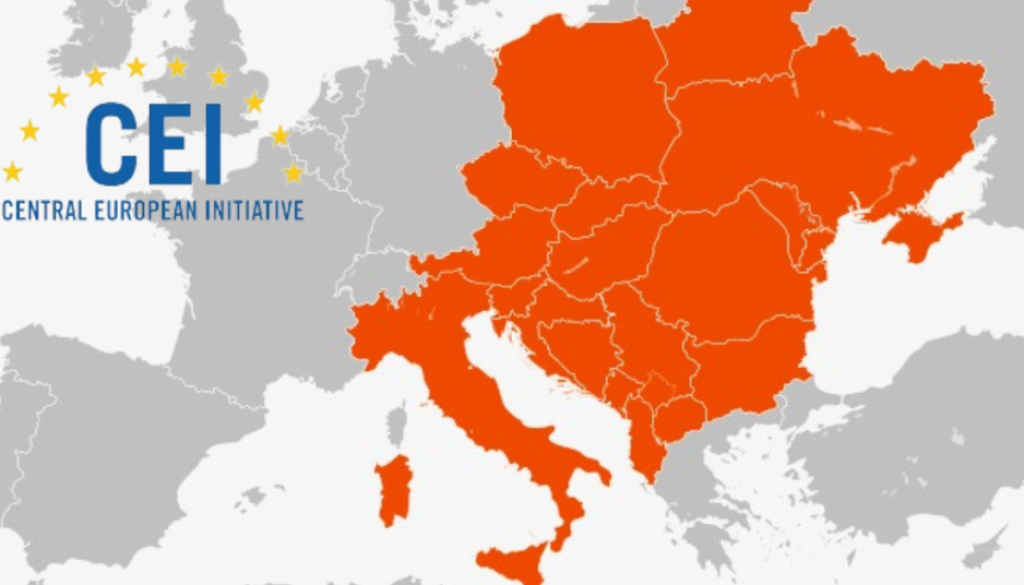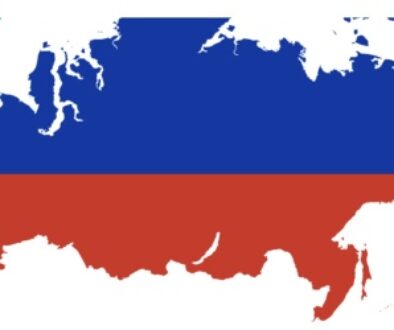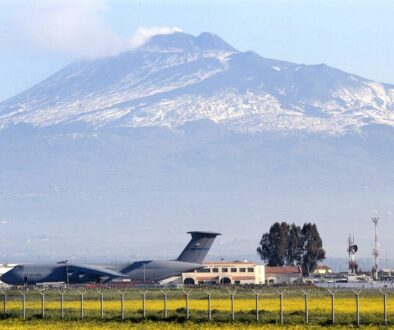Research introduction – The role of the Hungarian-Italian bilateral relationship in (re)building the Central European Initiative
di Bence Kertész
Student of Mathias Corvinus Collegium School of International Relations
Research Fellow at Università degli Studi Link Roma
Tempo di lettura 5'
Throughout history, Central Europe has been always the battlefield of interests, as Western and Eastern power poles were fighting to include the so-called Central and Eastern European Countries (CEECs) into their alliance systems. Now, the geopolitical dynamic of this rivalry is culminated in the war in Ukraine, which increments the importance and need for the unity of the Central European region.
At the end of the 20th century, a framework for regional coordination was created in the shape of the Quadragonale, which later transformed into the Central European Initiative (CEI) with its extension, creating possibility for cooperation in different aspects, and for the achievement of common objectives. Beyond that, the CEI also could be a platform to unite the CEECs even now, to represent its own values and interests during these geopolitical changes. But how can two of the founder countries, Hungary and Italy renew this cooperation to develop the region? This article aims to answer this question by introducing the theme of a current research project being made in the framework of the Fellowship Programme of Mathias Corvinus Collegium, with the support of the partner institution, Link University at Rome.
The excellent bilateral relationship between Italy and Hungary is based on a common past, involving shared values. Being regional pivots in geopolitics, it has been always an aim to become a strategic actor in European affairs, expanding economic, political influence and linking partners in the neighbouring countries. Due to these ambitions, Hungary and Italy has got many similar interests, which makes their cooperation in some scenarios more competitive, but in overall it became a strong partnership which also provides solutions for common challenges.
In the following, this article gives short insights from the perspectives of the most important cooperation sectors in which the common work of Hungary and Italy can be expanded to the wider community of the Central European Initiative. These ongoing collaborations can create examples for the CEECs, and have a spillover effect of benefits for them, regarding the themes in which there are common involvement (such as fighting against climate change).
From the common challenges, one of the most urgent is the need for securing energy support during this geopolitically instable period. The energy security of Hungary and Italy are relying on a decisive amount of energy import, thus the current tendencies of the energy sector affected deeply these countries. The whole Central European region has an interest in decreasing its energetical vulnerability by reducing outer dependencies. Italy has already shown an example of the process, as it could cut its dependency on Russian gas from 40 to 25 per cent just in 4 months. The secret of this success is the diversification of energy import sources through active energy diplomacy, by strengthening bilateral relations with partner countries, as Italy did with Algeria, which became its biggest energy importer. This could have never been achieved without the proper energy infrastructure, as the Trans-Mediterranean Pipeline provides interconnectivity between the continents. One of the latest examples of evidence for the future perspective of developing energy infrastructure between CEI members is the first Croatian LNG port in Krk island, which has a capacity to convert and transfer 2.6 billion cubic meters of gas to inland and neighbouring countries as well. Marking the importance of this project, it granted the title of EU Project of Common Interest in 2019, helping its financing process with a 102 million euros fund. These two elements, the proactive energy diplomacy, and the expansion of infrastructure can be the strategic pillars of Central European energy security.
All the Central European region is interested by the phenomena of migration, being another common challenge for these countries. Hungary and Italy – even though they are facing different natures of the problem due to their geographical position - share a common vision regarding the issue of illegal migration, as these states are strongly committed to control the national, and common European borders. As Croatia officially joined the Schengen zone by the 1st of January 2023, new opportunities and risks are emerged regarding the border control. The possible issues of the changed situation could be solved by the strong cooperation of CEI countries, as the border lies between only the members of the organisation.
Due to the recent crises, the humanitarian help of Ukrainian refugees also became a common mission of the region as around 2,7 million of them sought for shelter in CEI members. Italy and Hungary play a central role in helping these refugees, as Italy hosts around 112 thousands of them, meanwhile, Hungary helped through its borders around 2,3 million of them. This enormous contribution of the CEI members in helping Ukrainian refugees is also clear evidence of the strength of Central Europe aligned for a common purpose.
Hungary and Italy are strong supporters of the enlargement of the European Union, especially regarding the aspiring Western Balkan region. The principal interest of Hungary and Italy in the Western Balkans is the stabilisation of the region by guaranteeing peace between the culturally rich entities in the area. For this purpose, Italy and Hungary have always been active participants in peacekeeping missions in the area, as Italy delegated the majority of the Kosovo Force commanders, while a Hungarian major general held this position recently, in 2022. This security policy and military cooperation is an excellent example of how the Hungarian-Italian bilateral partnership can be a core element of Central Europe, giving an example for neighbouring countries as well.
Beyond the stabilisation process, both countries are interested in the economic development and the integration of the Western Balkans into the European Union. To help the financing process of the development, many Italian investment banks are present in the area, such as the Intesa San Paolo which has about 1.7 million customers in the region, making it a crucial financial actor. Hungary promotes direct investments as well, providing the necessary professional and financial help for projects. One of these innovative initiatives is the green fund of the Hungarian Western Balkans Green Centre, which encourages national experts to realise projects related to a green change – such as waste management or providing renewable energy sources - in the region.
One of the biggest challenges, in which all CEECs are involved is climate change, which represents a threat for many fields, especially agriculture. In Italy and Hungary, agriculture has a traditional role in these countries as it was forming a central part of their economy, and even now the unique products of the sector are playing a great part in forming the countries' external image through exports. This is the reason why both countries are struck by the consequences of climate change, especially drought. Beyond agricultural effects, the phenomena also threatens energy security, as Italy produces hydroelectric energy as 40 per cent of its renewable energy sources. This common challenge also needs a coordinated solution which could be achieved through the Central European Initiative.
The complete research is going to reveal the further opportunities available for Hungary and Italy to work together beyond and inside these fields with the aim of developing Central Europe. The briefly mentioned beneficial effects of a closer cooperation between the members of the Central European Initiative has an enormous future perspective and it can be a historic opportunity to create the unique unity of the region, for which there is an urgent and indispensable need in the current age of geopolitical instability.
Bibliografia
- https://www.corriere.it/politica/22_giugno_24/draghi-dipendenza-gas-russo-calata-25percento-bene-stoccaggi-298b029c-f3c0-11ec-b4bb-7eb5df080865.shtml
- https://www.ilsole24ore.com/art/gas-draghi-algeria-diventato-nostro-primo-fornitore-AEL40EnB
- https://wayback.archive-it.org/12090/20221222160612/https:/ec.europa.eu/inea/en/news-events/newsroom/first-croatian-lng-terminal-officially-inaugurated-krk-island
- https://eur-lex.europa.eu/legal-content/EN/TXT/PDF/?uri=CELEX:32020R0389&from=en
- https://www.offshore-energy.biz/croatia-sets-funds-aside-for-krk-lng-terminal/
- https://data.consilium.europa.eu/doc/document/ST-14239-2022-INIT/en/pdf
- https://www.statista.com/statistics/1312584/ukrainian-refugees-by-country/
- https://www.interno.gov.it/it/notizie/profughi-dallucraina-112098-quelli-giunti-finora-italia
- https://data.unhcr.org/en/situations/ukraine
- https://jfcnaples.nato.int/kfor/about-us/history/kfor-commanders
- https://defence.hu/news/hungarian-commander-in-charge-of-kfor.html
- https://group.intesasanpaolo.com/en/newsroom/news/all-news/2023/balkans-italy-business-opportunities
- https://balkaninsight.com/2020/03/11/hungarys-green-fund-for-western-balkans-a-win-win/
- https://www.enelgreenpower.com/learning-hub/renewable-energies/hydroelectric-energy/italy



